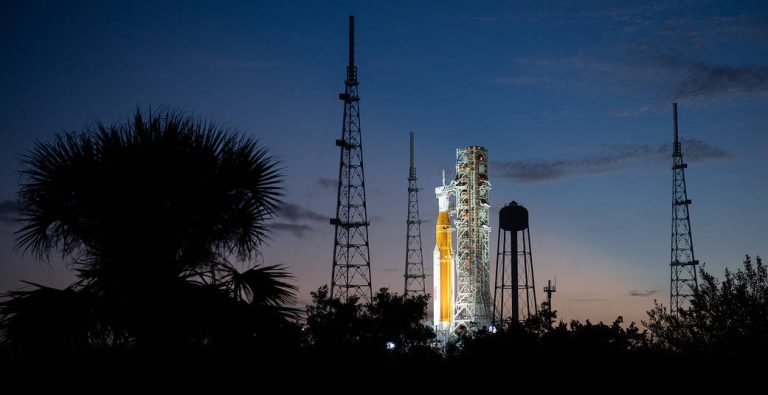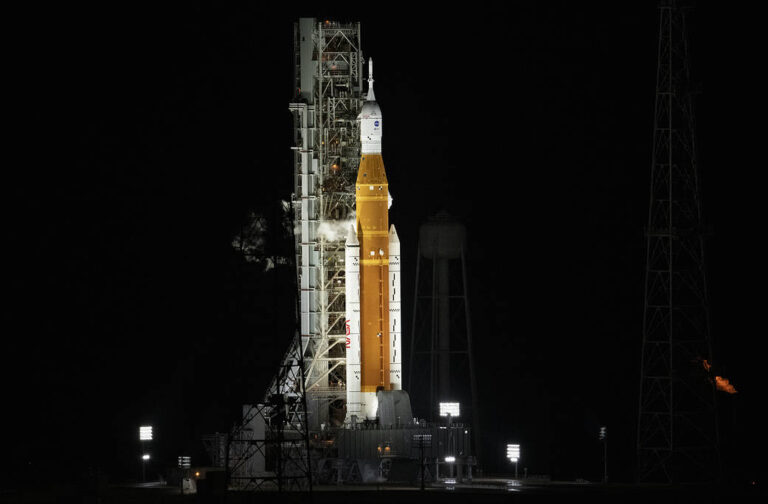猎户座接近月球,进行返回动力飞掠
A portion of the far side of the Moon looms large just beyond the Orion spacecraft in this image taken Monday, Nov. 21, the sixth day of the Artemis I mission, by a camera on the tip of one of Orion’s solar arrays. The darkest spot visible near the middle of the image is Mare Orientale. Image Credit: NASA See more images from Orion’s flight in our Flickr gallery. Get daily mission updates from our Artemis I blog. 11月21日,阿尔忒弥斯1号任务的第六天,由猎户座太阳能电池阵列顶端的相机拍摄的这张照片中,月亮远端的一部分赫然出现在猎户座飞船的正后方。图片中间可见的最暗的地方是东方海。 影像来源:NASA 在我们的Flickr图库中查看更多猎户座飞行图像。 从我们的阿尔忒弥斯1号任务博客获取每日任务更新。










